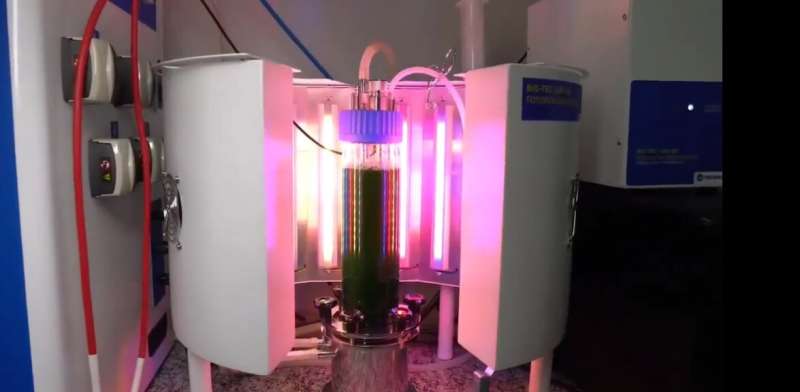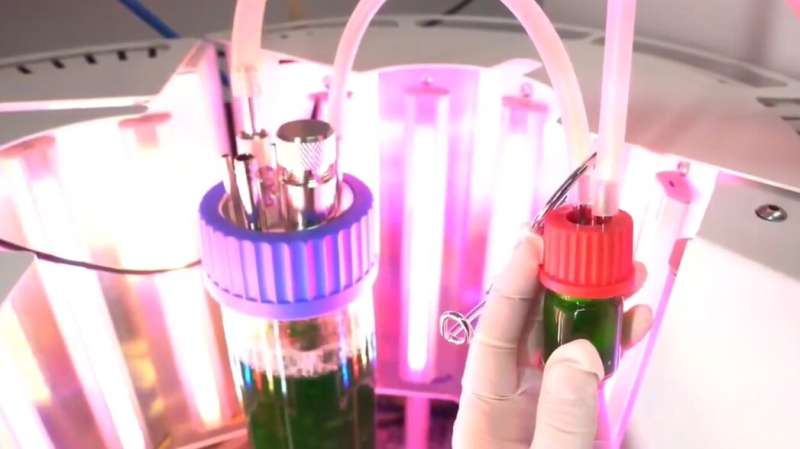Researchers map microalgae to investigate optimal climate zones for cultivation of high-value natural material

Microscopic algae may be small, but they hold great potential. Commonly known as microalgae, they have recently been attracting significant attention thanks to their promising applications across a range of industries, including renewable energy, pharmaceuticals, and cosmetics.
Microalgae produce a wide range of chemical compounds with high-value properties for health and other benefits. Astaxanthin, a red pigment produced by some microalgae, is an antioxidant and is marketed as a nutritional supplement. Many species produce compounds with pharmaceutical properties such as antibacterial and antiviral activity. Chlamydomonas reinhardtii is a microalgae commonly used in pharmaceutical biotechnology, as an ideal host for the production of recombinant proteins such as antibodies, vaccines and hormones.
As a rich source of carbon compounds, microalgae can also be considered one of the most promising sources for biofuels, making them a potentially viable solution for fossil fuel phase-out and climate change mitigation.
However, the high cost associated with their cultivation is one of the main barriers to the growth of the market. Now, researchers in Brazil have set out to optimize the industrial outdoor cultivation of microalgae, by mapping performance across climate regions globally, for the first time.
With over 90% of commercial microalgae cultivations grown outdoors, local climatic conditions can have a huge impact on productivity, but the data to quantify this has been lacking.

The team at the Federal University of Santa Maria, Brazil, has been filling the void by mapping the performance of bioreactors for microalgae culture across climate zones globally. Using a closed bioreactor, they simulated variables of day length, solar irradiance and temperature. The results, gathered over thousands of hours of experiments, are published across three papers in the Journal of Chemical Technology & Biotechnology.
“Around the world, a limited number of places have suitable conditions for [efficient microalgae productivity]. Our study aimed to define these ideal places,” said Eduardo Jacob-Lopes, Bioprocess Intensification Group, Federal University of Santa Maria, and lead author of the studies. “Light and temperature are two critical parameters in the growth of a photosynthetic microorganism such as microalgae.”
Initial proof-of-concept experiments published in 2020 mapped microalgae culture performance across six extreme positions of Brazil, demonstrating that the choice of geographic position and local climate had the potential to triple biomass productivity.
Jacob-Lopes noted, “Microalgae biomass is the chassis of almost all microalgae-based products. Most of the products are intracellular, so the high biomass productivity reflects the high production of product targets.”
Since then, the researchers have simulated the climatic conditions for equatorial, tropical, sub-tropical and mid-latitude regions to provide a semi-empirical estimate of microalgae productivity across the globe. The results support the potential of equatorial, tropical and subtropical regions for highly productive microalgae cultivation.
Jacob-Lopes hopes that the findings will help to boost the commercial viability of microalgae across industries. “The technological bottlenecks are related to production in real-scale conditions. Commodities need to be produced in high volumes at low prices. By enhancing commercial productivity, this equilibrium will be reached.”
More information:
Stefania F Siqueira et al, Mapping the performance of photobioreactors for microalgae cultivation: geographic position and local climate, Journal of Chemical Technology & Biotechnology (2020). DOI: 10.1002/jctb.6423
Rosangela R Dias et al, Mapping the performance of photobioreactors for microalgae cultivation. Part II: equatorial and tropical climate zone, Journal of Chemical Technology & Biotechnology (2020). DOI: 10.1002/jctb.6574
Rosangela R. Dias et al, Mapping the performance of photobioreactors for microalgae cultivation. Part III: subtropical and mid‐latitudes climate zone, Journal of Chemical Technology & Biotechnology (2023). DOI: 10.1002/jctb.7369
Provided by
Society of Chemical Industry
Citation:
Researchers map microalgae to investigate optimal climate zones for cultivation of high-value natural material (2023, June 29)
retrieved 30 June 2023
from https://phys.org/news/2023-06-microalgae-optimal-climate-zones-cultivation.html
This document is subject to copyright. Apart from any fair dealing for the purpose of private study or research, no
part may be reproduced without the written permission. The content is provided for information purposes only.
For all the latest Science News Click Here
For the latest news and updates, follow us on Google News.

